Digging in the garden: recent activities
Melissa Northern Italy zone 8
7 years ago
Featured Answer
Sort by:Oldest
Comments (13)
Sheila z8a Rogue Valley OR
7 years agoMelissa Northern Italy zone 8
7 years agoRelated Discussions
Current/recent garden projects
Comments (7)The power company vegetation management team had been trimming trees in my area including removing a maple tree and a pine tree from my yard. I "allowed" them to dump three truck loads of wood chips in my front yard. My neighbor came over and ground the stumps out and spread the wood chips with his tractor until they are about 8 inches thick. I have a pot ghetto of hostas and hydrangeas which are still quite small. I will sink the pots into the wood chips in the spring when I take them out of the hibernation cave (the hostas) and the greenhouse (the hydrangeas). Yeah much less grass to mow! Same neighbor with the tractor also has a dump body truck. Last Sunday we went and got about 10 yards of horse manure. The people I get my horse manure from take exceptional care of their horses. They put fresh sawdust down in the stalls and feed the horses alfalfa hay. The pastures are kept relatively weed free. The owners regularly turn the heap so that it composts efficiently. My sister and BIL own a few homes in a wooded community. A couple of their tenants grind and bag the leaves in their yard. My BIL collects them and brings them to my house. Last fall I sprayed roundup in a couple of areas where I wanted flower beds. I then put some of my pot ghetto plants directly in the ground. I have been top dressing these plants with the horse manure, spreading the shredded leaves in between the plants, and then putting the wood chips I got from the power company LAST year on top. Yesterday the people I get my llama manure called to tell me they had a good supply and they had purchased a new tractor and bucket so they will be able to load it onto my truck for me. I am head over there today. My roses love llama manure. I have been whiling away the dark hours of winter perusing plant vendors online and have purchased many plants to arrive in spring. Yes it has been very cold here in Virginia this winter making it a bit more challenging to get outside and get things done. I feel like I am on track for the arrival of spring. I still have lots to get done, but there is still plenty of winter left to get it done. Kathy...See Morewinter activities of gardeners
Comments (14)It seems in winter, I still don't have that much free time on my hands. With kids, shift work and general household chores things don't seem to slow down for me much. DH and I both work at the same company and are always on opposite shifts (for the kids sake) so I'm like a single parent during the week. I always do more than my share of OT at work. (My ex is one of those dead beat dads who doesn't believe in paying child support). So to have extra, I need to work extra. My 16 year old went for a job interview today. And my 13 year old daughter babysits from 5:30 am til school starts plus any other school holidays. This fall she also started working partime at our local bar/resturant/hotel 3-4 days a week. (She's ambitious) So you know what that means for me---NO HELP AT WITH HOUSEWORK COOKING OR LAUNDRY. So what do I really do in the winter? Bake, I love baking. I catch up on some of the newer movies. I try to read but usually fall asleep. I usually do go through and clean the whole house from top to bottom.(And shove all clutter into the closets)...LOL. And in past winters I've gone to ceramic classes. This will probably happen again this year as well. I will be spending alot of time online browsing and contemplating on what my 2007 plant purchases will be. And also frequenting this FN forum. (My favorite place to visit) Last winter I started my own veggies and flowers from seed. I haven't done this in years. (Flowers never) All in all it was a success. It really wasn't any cheaper because I had to buy everything including stands, pots and lights. But I'm looking forward to doing this again. Itching really. It'll be cheaper this go round. Shelley...See MoreAvant Gardens-other garden activities nearby
Comments (3)Monique sounds like a wonderful daytrip. I am not sure about Allen Haskell's but I have begun to notice a label on some plants that I have bought from area nurseries naming the grower/distributor Quansett Nurseries for New England, some familiar names are Blooms of Bressingham, Steppables, Proven Winners, ect. Avant Gardens is in North Dartmouth and Quansett Nurseries is in South Dartmouth. As a whole sale distributor they may not sell to you but it might be an interesting pit stop. I would suggest you e-mail first. The recommended restaurants and activities are from the Avant Gardens web site www.avantgardensne.com Places to Eat and other Points of Interest Some of our favorite spots to grab a bite are: MargaretÂs 16 Main St Fairhaven, MA 508-992-9942 Delicious varied and inventive menu using lots of fresh vegetables, seafood. Open for breakfast lunch and dinner. Closed Tuesdays. BYOB $- $$ Â Not Your Average JoeÂs 61 State Rd Dartmouth MA 508-992-5637 Something for everyone, wood oven pizza, burgers, imaginative appetizers, salads and entrees. Full Bar. Lunch and dinner. Â The Lebanese Kitchen 1487 Purchase St New Bedford MA 508-992-8217 Healthful and delicious Lebanese specialties, including Baba Ganoush, Fattoush, and Shawarma. Open for lunch and dinner. Closed Sundays. $ Â The Back Eddy 1 Bridge Rd Westport MA 508-636-6500 Great spot on the Westport waterfront, with emphasis on regional cuisine using local produce, meats and seafood.$$-$$$ Â The Kinsale Inn 13 Water St Mattapoisett Ma 508-758-4992 One of the oldest innÂs in the northeast, this is a great spot to enjoy a cold brew and have a bite to eat. While you are in the area, consider visiting these local attractions: Â AHA! Night in Downtown New Bedford Downtown New Bedford which hosts the site of the UMASS Dartmouth School of Viusual and Performing Arts, is becoming the place for artists to open galleries and call home. On AHA! (for Arts History and Architecture) Night, held the 2nd Thursday of the month from 5-9, these galleries open their doors to visitors, and the local museums waiver admission fees. Music and dance fill the streets, and there are special activities for children. Â The Whaling Museum 18 Johnnycake Hill New Bedford MA 508-997-004 A treasure trove of local history and memorabilia of New Bedford's whaling past. Traditional music lovers should inquire about their concert series. Â The New Bedford Art Museum 608 Pleasant St New Bedford MA 508-961-3072 Wonderful small art museum housed in one of New Bedford's grand old buildings. Exhibits change several times during the year. Â Acushnet River Antiques 72 Kilburn St New Bedford MA 508-992-8878 Many gardeners are treasure hunters and this is a good place to check out frequently. Over 95 dealers of antique furniture, garden finds, textiles, jewelry pottery and collectables. Easy access off of Rt 195. Open Mon-Sat 9-5, Sun 11-4. Â Fort Taber over looking BuzzardÂs Bay The southernmost tip of New Bedford is now a state park with unobstructed views of BuzzardÂs Bay and the Elizabeth Islands. Relax and catch the refreshing ocean breeze. Fort Taber offers bike paths, a picnic area and swimming at the adjacent New Bedford beaches. Take Rt 18S off of RT 195. At the end of Rt 18, Continue straight on West Rodnery French Blvd. Â Demarest Lloyd State Park BarneyÂs Joy Rd S. Dartmouth MA Horseneck Beach Route 88 Westport MA Two more spots to enjoy the ocean. Demarest Lloyd offers a protected beach for swimming, with a wooded area for picnicking in the shade. Horseneck is known for its pounding surf and sand dunes....See MoreJune Gardening Activities
Comments (31)Compared to my luck with agastache, it's sounds pretty good to only lose half. I grew Apricot Sprite from seed one year. I started with lots and ended up with about two that have since disappeared. I have a lot of trouble getting those to winter over. I bought myself a treat at Lowe's. They had coreopsis 'Snowberry' and they looked so pretty grouped on the table there. Not very showy once I got it home and planted it all by itself but if it spreads, it might be pretty. I haven't had very good luck with coreopsis wintering over either but I planted it where it will get a little bit of windbreak from the north in the winter and I kept my receipt just in case. I planted some more zinnia seeds yesterday and today. I didn't get very good germination from the ones I had already planted. There will be a few but not the big patch I was picturing in my head. I planted Exquisite Pink, Violet Queen and some more Scarlet Flame this time. Hope they're quick to mature. Hubby got a snow blower for Father's Day and he's assembling it right now with our son's help. He's anxious to use it but I think it will be a few months. lol We have a long driveway and I worried when he was out shoveling last winter. I hope it does the trick....See Morebarbarag_happy
7 years agoKes Z 7a E Tn
7 years agoMelissa Northern Italy zone 8
7 years agoSheila z8a Rogue Valley OR
7 years agoMelissa Northern Italy zone 8
7 years agoEl Jardín de la Alegría en Madrid
7 years agolast modified: 7 years agoEl Jardín de la Alegría en Madrid
7 years agoingrid_vc so. CA zone 9
7 years agoKes Z 7a E Tn
7 years agoEl Jardín de la Alegría en Madrid
7 years agolast modified: 7 years ago
Related Stories

GARDENING GUIDESGarden Myths to Debunk as You Dig This Fall and Rest Over Winter
Termites hate wood mulch, don’t amend soil for trees, avoid gravel in planters — and more nuggets of garden wisdom
Full Story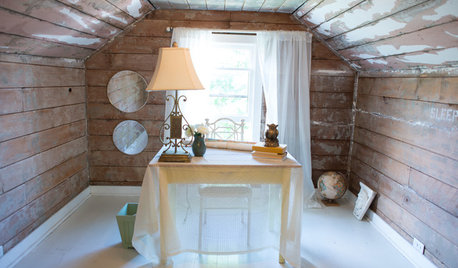
DECORATING GUIDESSimple Pleasures: Digging in the Attic
Sift through forgotten things to bring back memories and inspire stories — and maybe even yield a treasure or two
Full Story
GARDENING GUIDESGreat Design Plant: Milkweed
Quit cringing. This not-weed plant is a sight to behold in the garden, has a delicious vanilla scent and is a magnet for butterflies
Full Story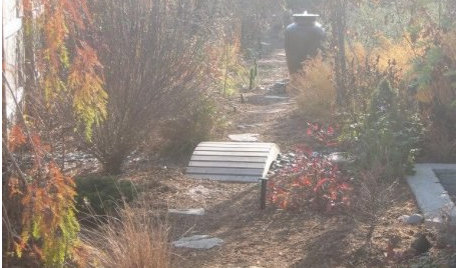
GARDENING GUIDESCentral Plains Gardener's November Checklist
Mulching, seeding, feeding — several small tasks to ensure a winter of activity, and a good spring start.
Full Story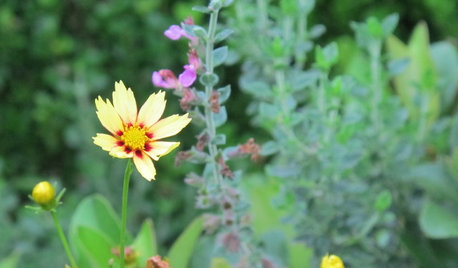
GARDENING GUIDESGreat Design Plant: Coreopsis 'Redshift'
Breaking with its pure-yellow past, 'Redshift' tickseed will change up a bland garden with its hot new color combo
Full Story
GARDENING GUIDES9 Clay-Busting Native Flowers for Summer Sun
These plants survive and even thrive in tough clay soil east of the Rocky Mountains
Full Story
GARDENING GUIDES7 New Plants to Grow for Beautiful Foliage
Add color, structure and interest to your garden with these recently introduced plants that sport exceptional foliage
Full Story
GARDENING GUIDESGreat Design Plant: Butterfly Milkweed, a Beacon in the Prairie
Vivacious orange flowers for you, nectar for the butterflies and bees. Asclepias tuberosa is worth planting for more reasons than one
Full Story
GARDENING FOR BUTTERFLIESA Quick-Start Guide to Bird-Watching for Fun and Learning
Set out some seed and grab your field guide. Bird-watching is an easy, entertaining and educational activity for the whole family
Full Story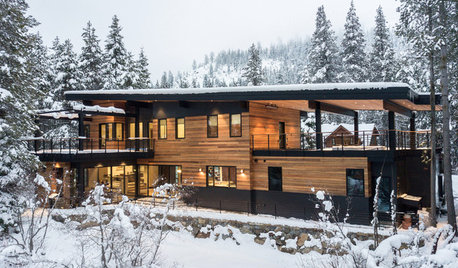
MONTHLY HOME CHECKLISTSYour Winter Home Maintenance Checklist
Keep your home and yard safe and running smoothly as temperatures drop and activity moves indoors
Full Story







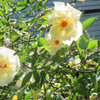

El Jardín de la Alegría en Madrid